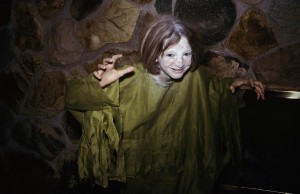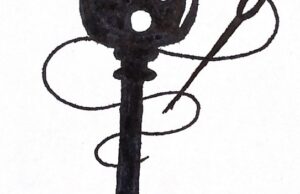Teachers remember Halloweens past
Fall is a season of change, a precursor to the rebirth of spring. One of America’s greatest fall traditions, Halloween, has also seen many changes throughout the years. In order to better understand these changes, we have decided to investigate how the teachers of Newbury Park celebrated the spooky jamboree as children, compared with how they see it nowadays.
A growing number of parents seem to be increasingly concerned for the safety of their children during Halloween in part due to the scope of neighborhoods that their brave knights and princesses trek across in their quest for candy as well as the growing fear of stranger danger, the concept that strangers cannot be trusted especially during times such as Halloween. Despite popular belief trick-or-treaters did share this cautiousness and fear of “stranger danger” in friendlier times.
Newbury Park French and Spanish teacher Jackie Marinello-Sweeney recalled that, “I would tend to go to the houses not too far from my house and we would usually go to the houses of people we knew. We knew where it was safe and we knew the people who have lived there enough years so it was pretty safe.”
While many trick-or-treaters felt safe it was because they knew most of the people that they were trick-or-treating not because there were less evil wicked people.
The costumes that kids wear have also changed considerably. While some parents or trick-or-treaters may make their own costumes for the eerie jamboree many more prefer to head to their local Halloween costume shop and choose a premade costume that suits their fancy. When psychology teacher Peggy Walker was growing up she would make her own costumes.
“I never bought costumes. We made our own. That’s why I was usually a hobo or something easy to do,” Walker said.

When Peggy Walker was a child, she would make homemade costumes, a tradition that is now uncommon with the convenience of store-bought costumes. Peggy Walker/With Permission
While many more people consider buying their costumes from special warehouses for the sake of convenience nowadays the store bought costumes and accessories were anything but convenient when Mrs. Walker was growing up. While homemade costumes could have kept the sly spooks warm and were often convenient, accessories such as masks were “little plastic things that were uncomfortable to wear” and makeup served the same purpose without the hastle.
Not only have the costumes and parents changed but so have the festivities. While teenagers have continued to party or scare unsuspecting youngsters, the children used to participate in more organized and community based events such as Mrs. Walker’s mother’s haunted house.
According to Mrs. Walker, “One of my favourite memories was of my mom dressing up as a witch and scaring people to death” inside of the haunted house they would play games such as bobbing for apples or feast on donuts and hot cider at her friends’ houses as they would celebrate Halloween together at various locations.
Halloween appears to be a very dynamic holiday, changing from generation to generation.
Social science department chair and history teacher Steve Johnson notes that, “It’s become more commercial with more haunted houses, displays, and decorations.”
While money is more involved in Halloween, according to Mr. Johnson, he also says that, “It’s not necessarily a bad thing, it just reflects the changes in our society and there are more opportunities for people to celebrate it.”
It appears that Mr. Johnson perfectly summarizes the changes that have occurred in Halloween over a couple generations, while money and businesses have become more involved in the holiday the amount of opportunities have also increased for those that want to celebrate.

